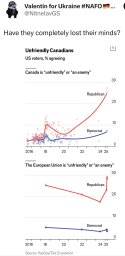Cruise missiles are much easier to intercept than ballistic missiles based on data from Ukraine, by both western and Russian systems.You are correct that China-Taiwan is not comparable to US-Iran, but not for reasons that you think. The key differences are that (1) the strength disparity between the US and Iran is much greater than that between China and Taiwan and (2) Taiwan would be able to hit back directly at China's mainland whereas Iran has nowhere near the reach required to do likewise to the United States.
The US would be able to deploy and rotate assets on/off Diego Garcia, and while they might not be able to muster as much firepower per unit time as the Chinese could onto Taiwan, the US has the tyranny of distance on their side. The Iranian missile and fighter forces would not be able to strike back. As the conflict progresses, US air and naval forces would be increasingly efficient at eroding Iranian counterattack capabilities while suffering little to no risk of reprisals. Moreover, the US operation does not require landing boots on Iranian soil, which makes such an undertaking much less complicated than a Taiwan scenario.
So you are absolutely right that nobody should be equating Taiwan with Iran; the former would be a much more complicated and potent adversary to deal with, and if the USN already has trouble fighting Iran given all the profound advantages, then the PLAN would do well not to fight a war with Taiwan.
Iran dwarfs Taiwan in power? China's military is rivalling that of the US?
Once we are back in reality, let's take a look at the numbers.
The IRIAF has some ~300 combat aircraft, of which ~30-40 are the somewhat-modernized F-14. The operative term is "somewhat". The rest of their inventory could be dismissed as obsolete 3rd-generation airframes that wouldn't be of much relevance in a modern war.
The ROCAF has around ~400 combat aircraft, of which ~200 are the F-16V standard uprades & newbuilds. This is almost comparable to the PLAAF's entire J-10C fleet in terms of both quantity and capability. In addition to that, the rest of their fleet are comprised of the F-CK-1 and Mirage 2000, both of which are of the 4th generation and likely more capable than any of Iran's fighters.
Let's not forget about the ROCAF's force multipliers such as its E-2 fleet. Let's not forget that - while Iran has certainly shown its mettle with its array of ballistic weaponry - Taiwan has a large stockpile of long-range supersonic-capable cruise missiles. This is not to mention naval forces.
I see the tyranny of distance as an advange for the US; Diego Garcia is almost 5000 km from Iran - US jets could hit Iran and the latter would not be able to retaliate unless it's against some other US base in the region.
There is no advantage to a supersonic cruise missile in land attack, as it is neither flying too fast and high to be shot down by a regular AAM or SAM, nor is it flying low enough to slip under the radar horizon. It is worse than using Cold War era SCUDs. There's a reason US and Russians both gave up development of supersonic cruise missiles early in the Cold War.
Having 4th gens against 5th gens and ballistic missiles in an area as small as Taiwan is little different no air force at all. The other fact is that Taiwan doesn't have enough AIM-120s to even equip all their F-16s for more than 1 sortie, except if their F-16s were basically 1 time use and disposable, which I guess is what they expect.
As you see there are ~800 AIM 120s total, rest of their inventory is obsolete AIM-7 Sparrows from the 1960s.
In such a case, yeah Iran is going to be much more resistant to attack than Taiwan, because Taiwan's military is basically a shitty 1960s doctrine version of a US style expeditionary military that aims to attack someone weaker, not a military that can actually do homeland defense. These aren't the same thing as Australia found out when their offensive military that flies right up to China couldn't even track a 055 destroyer squadron that circled around their entire country.



